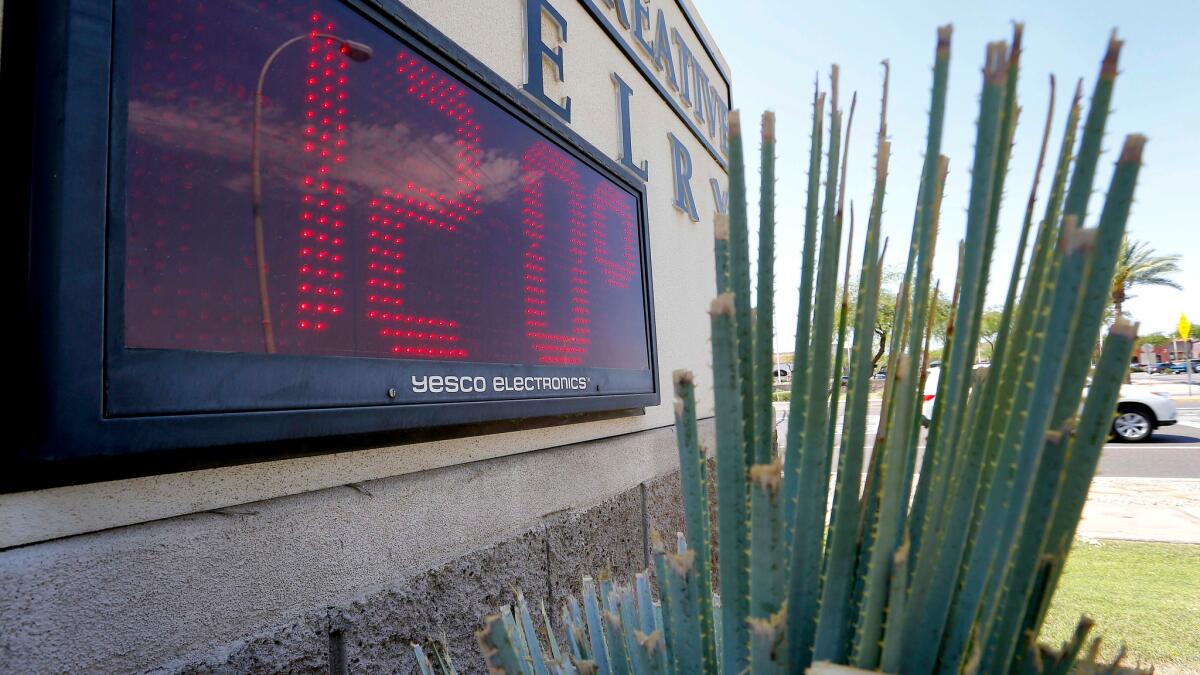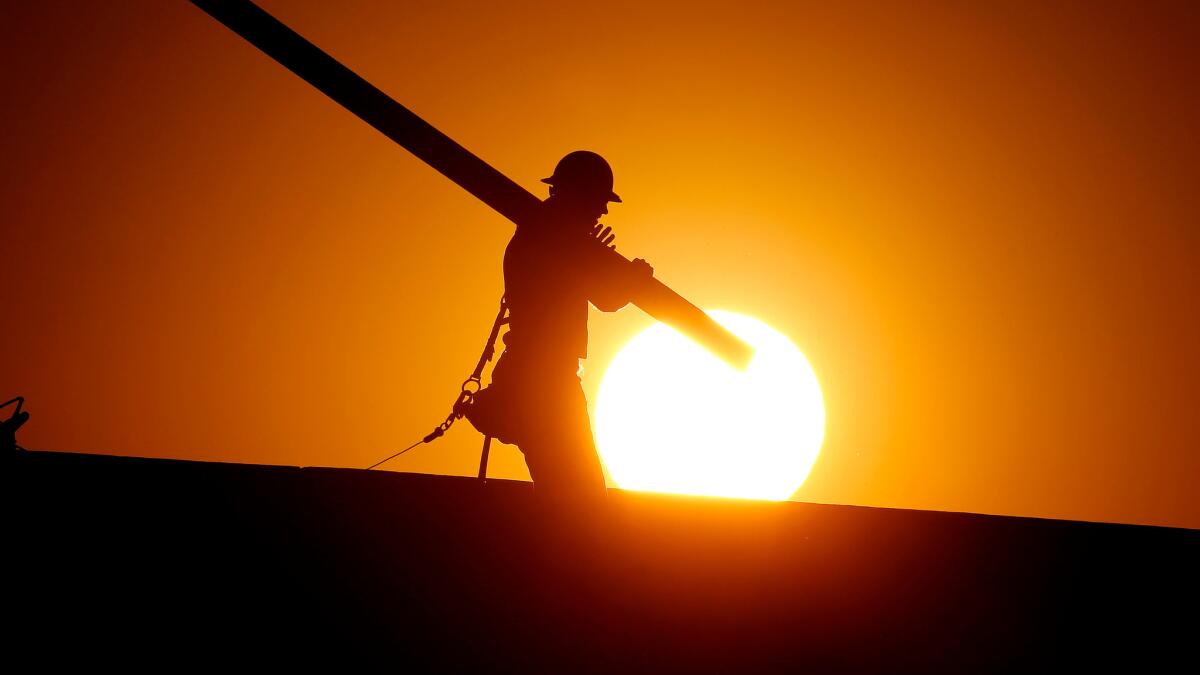In Phoenix, an ambitious plan aims to cover 25% of the metropolis with tree shade

- Share via
Reporting from PHOENIX — This Southwest capital presents a distinctive postcard: brutal heat, desert peaks, sprawling subdivisions and endless asphalt.
Richard Adkins wants to add another image: trees.
“I’ve heard most of the jokes and I can deal with them – ‘Phoenix, really, you have trees? I thought you had cacti,’” said Adkins, the city’s forestry supervisor. “But we do have trees here.”
There may be many more in the years to come.
Under a plan Adkins is developing with the support of city officials, 25% of Phoenix would have tree canopy by the year 2030. That would be a notable increase from the current situation: A recent study determined that overall canopy in the city is less than half that.
Yet with a new emphasis on downtown development and walkable neighborhoods, as well as increasing concerns about heat on human health (forecasts show that climate change will make things even hotter here), Phoenix is actively seeking more shade.
That can mean “engineered” shade, like the small steel “trees” rising out of planters on some corners downtown, or larger structures like those in Civic Space Park or at many of the city’s newer transit centers. It will also mean more real trees – whether natives, like mesquite and palo brea, or non-natives that have proven resilient in a particularly challenging setting.
The way Adkins describes one non-native he and other arborists in the Southwest have grown fond of, the Chinese pistache, offers a window into just how much is asked of a tree in urban Arizona.
“Not very messy at all, very low maintenance, but very high yielding as far as benefits,” Adkins said of the pistache, which is native to China. “Great thick shade, good for air quality because it has a very thick crown and can intercept a lot of particulate matter. It has a good root system that’s not too shallow, so I don’t have a lot problems right now with buckling sidewalks or destroying infrastructure. And it’s one of the only trees that’s going to give you nice red fall color. In Phoenix, we don’t have have a lot of fall color — we don’t have a lot of fall, period.”
He added, as if for the sake of full disclosure, “The leaves do drop once a year.”

But then it was right back to the benefits: “Aesthetically, it’s quite pleasing. It can bring commerce to any business that had it out front because, you know, people are drawn to nice vegetation and shade.”
That last point has not always been so appreciated in Phoenix. Tall palms, evoking a desert oasis but providing little shade, are still prominent in many places, as are green lawns. There can also be a shade divide, with vast stretches of bleakness — nothing overhead but the sun — in some lower-income neighborhoods.
Adkins is a persistent advocate for improvement. The city recently created an online inventory of its trees — it has more than 92,000 — and Adkins has scattered tags on trees around town to document their environmental and economic value. He uses a formula developed by the United States Forest Service and arborist groups that factors in how much carbon a tree stores, how much electricity it saves, how much it reduces stormwater and the aesthetic value it offers.
“We went from being a palm-pruning, tree-pruning maintenance crew to where now we’re actually managing the entire urban forest and trying to move forward with shade percentages, increased canopy coverage and managing it more appropriately,” he said.
The shift has come as Phoenix tries to catch up with other cities in making the kind of urban environment to which young workers flock. But meeting the goal comes with more challenges here, including working collegially with a development community accustomed to paving what it wants to pave – and not necessarily being told what it should plant. And then there is water, or the lack of it.
While some older parts of town average as much as 17% shade, other areas dip to 7% or 8%.
“There’s a lot of pushback – ‘You plant more trees, well, we’re going to have to use more water,’” Adkins said. “That’s where it gets into species choice and water management. Even today, most people over-water everything. But is water a consideration? Of course? Do I feel we have ways of watering and harvesting rainfall with green infrastructure to help provide for our street trees? Absolutely. Do I think we need to give up trees for water? No.”
The showcase for the city’s new emphasis on trees and shade may be Civic Space Park, completed in 2009 by cobbling together nearly 3 acres of land in the middle of downtown. It includes solar panels, pervious pavers, a fair-trade coffee shop and dozens of Chinese pastiche and oak, another tree Adkins said can do surprisingly well here if properly managed. When the trees are mature, perhaps in another 5 or 6 years, more than 70% of the park is expected to be shaded.
Getting the entire city up to 25% will be considerably more challenging. While some older parts of town average as much as 17% shade, other areas dip to 7% or 8%.
“Twenty-five percent, that’s very ambitious,” Adkins said. “But you’ve got to have a number to shoot for. That’s what gets people behind you and moving forward.”
ALSO
In a town that prides itself on racial understanding, a police shooting makes everything about race
Democrats aren’t the only tourists flocking to Philadelphia. So are heroin addicts
More to Read
Sign up for Essential California
The most important California stories and recommendations in your inbox every morning.
You may occasionally receive promotional content from the Los Angeles Times.














